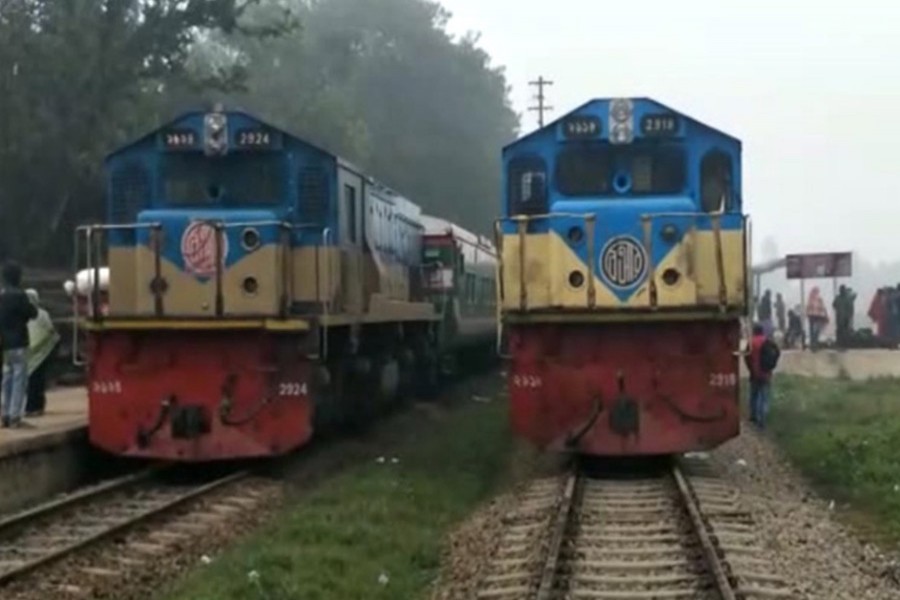As Dhaka gets busier and continues to be filled with newer workplaces and businesses, commuters keep rising. The phenomenon has characterised the capital for over four decades.
In the past, the northernmost periphery of Dhaka's bus commuters was Tongi, connected also to Dhaka by normal train service. Few people could muster the courage to attend offices in Dhaka daily from areas beyond Tongi. To the south, Jinjira Bazar on the bank of the Buriganga was deemed the furthest point for the commuters. A railway service had been operating between Dhaka and Naryanganj since the pre-partition period.
In independent Bangladesh, the commuter-train shuttling between Dhaka and Narayanganj assumed higher importance than before. Due to the bad condition of roads, the bus service connecting the two places could not attract the commuters for a long time. Commuters in not much hurry could be seen travelling on the circuitous Dhaka-Narayayanganj motor-launch route. For people in Munshiganj, with no land connection with the capital then, launches were the only mode of commuting.
As the years wore on, the commuters have been seen travelling between Dhaka and areas as far as Gazipur, and even Maona, to the north. To the west, commuters in Dhamrai in Dhaka district were seen travelling to and from the capital by bus. On both the above routes, people got used to travel by various types of buses -- non-stop, gate-lock, local etc. On the other hand, Dhaka-Savar line is considered one of the earliest commuting routes in greater Dhaka. Over the last one and half decades, people have been travelling to Dhaka every day from the greater area of Keraniganj and beyond.
The Dhaka-Narayanganj railway route has long been on the decline. The dilapidated commuter trains remain chockablock with passengers, with their speed becoming slower. As a result, a great number of the commuters have switched over to buses, many of them being deluxe and air-conditioned. Thanks to the recently constructed flyover, the travel time has been cut drastically. Few people in Munshiganj, nowadays, travel to Dhaka by motor-launches. They, too, have lots of buses in operation which take them to Dhaka in a far shorter time than they would require in travels by launch.
Apparently, the character of commuting to Dhaka has undergone a great transformation. People from newer areas, those relatively close to the capital, now travel to Dhaka by commuter trains. This facility has enabled thousands of people to travel to Dhaka every morning and go back home in the evening after completing their work. This type of rail travel was veritably unthinkable even 10-15 years ago. Bangladesh has entered the commuter train era only recently.
Elsewhere in the sub-continent, especially in Kolkata, people have been travelling by commuter trains for nearly five decades. In Kolkata, the West Bengal state's capital, daily passengers come to the busy city from areas as far as 70-150 kilometres. A remarkable advantage that helps the state's commuter trains remain speedy and timely in their movement is their electrically operated movement. Trains reaching the stations in Kolkata are mostly run on electricity. Moreover, the underground metro rail or 'Patal Rail' has greatly added to the commuters' convenience in their travel within the metropolis.
Bangladesh has lately begun showing the signs of its emergence as a commuter-friendly country. Commuting to and from Dhaka continues to bring newer areas under its network. But due to lack of sufficient manpower, lackadaisical infrastructure and dearth of enough carriages, locomotives etc., the rail commuting might take a longer time before being termed an efficient service.
Of all things, the imperative appears to be an all-out focus on the upgrading and modernisation of the rail tracks. Like in the roads and motorised vehicle-based traffic network, an overhaul of the commuter-focused railway sub-sector has long been overdue.


